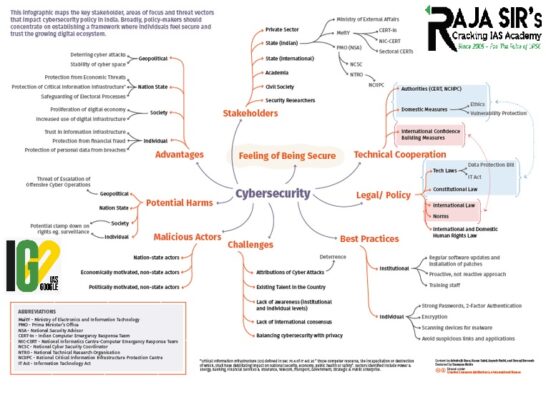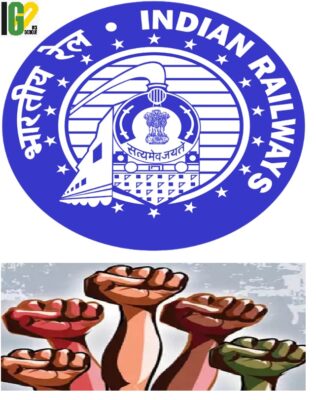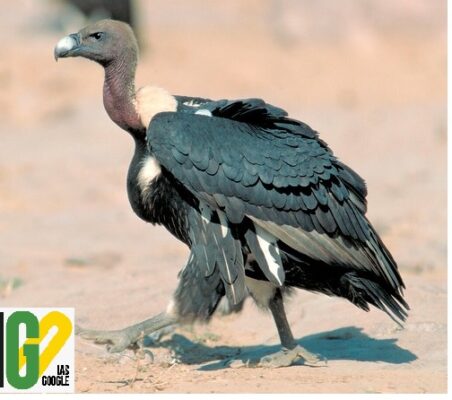- Home
- Prelims
- Mains
- Current Affairs
- Study Materials
- Test Series
 EDITORIALS & ARTICLES
EDITORIALS & ARTICLES
19th Sep 2021
BJP REMOVES CM VIJAY RUPANI 15 MONTHS BEFORE GUJARAT ASSEMBLY POLLS
The Chief Minister of Gujarat resigned on 11th September, a few months ahead of the Assembly polls in 2022.
Appointment of a CM:
 Highlights:
Highlights:
 1. Phishing:
1. Phishing:


- The Chief Minister is appointed by the governor.
- Article 164 of the Constitution provides that there shall be a Council of Ministers with the Chief Minister at its hand to aid and advise the governor.
- After general election to the State Legislative Assembly, the party or coalition group which secures majority in this House, elects its leader, and communicates his name to the Governor.
- The Governor then formally appoints him as the Chief Minister and asks him to form his Council of Ministers.
- When no party gets a clear majority in the State Legislative Assembly, the Governor normally asks the leader of the single largest party to form the government.
- A citizen of India.
- Should be a member of the state legislature
- 25 years of age or more
- Must be a graduate
- Theoretically, the Chief Minister holds office during the pleasure of the Governor.
- In actual practice the Chief Minister remains in office so long as he continues to be the leader of the majority in the State Legislative Assembly.
- The Chief Minister is at the Head of the Council of Ministers and the leader of the house.
- He must communicate to the Governor all the decisions of the council of ministers relating to the administration of the states.
- All the policies are announced by him on the floor of the house.
- He recommends dissolution of legislative assembly to the Governor.
- He advises the Governor regarding summoning, proroguing the sessions of State Legislative Assembly from time to time.
- The Chief Minister of any state hands over his resignation to the Governor of that state.
- In the event of a Chief Minister's resignation, the outgoing Chief minister holds the informal title of "caretaker" Chief minister until the Governor either appoints a new chief minister or dissolves the assembly.
- He enjoys all the powers of a regular Chief Minister.
- He cannot make any major policy decisions or cabinet changes during his/her short tenure.
- The Governor can dismiss him in case he loses his majority support.
- The State Legislative Assembly can also remove him by passing a vote of no-confidence against him.
- Maharashtra, along with Madhya Pradesh, is one of the leading soya producing States. Together they contribute an estimated 89% of the total soya production in India.
 Highlights:
Highlights:
- India had the requirement of 28.99 lakh quintal of soybean seeds for 2021 Kharif season, and the availability was 28.11 lakh quintals.
- But India had exported about 19 lakh tonne non-GM soyameal to other countries.
- As a result, India’s poultry sector faced a shortage of soyameal and the now government has decided to import GM soya cake.
- So, the soya prices in the market have come down and farmers have to sell their produce at a lower price.
- This explains lack of ecosystem and poor planning in India’s oil seeds and oil production.
- Major edible oils consumed in India are mustard, soyabean, groundnut, sunflower sesame oil, niger seed, safflower seed, castor, and linseed (primary source) and coconut, palm oil, cottonseed, rice bran, solvent extracted oil, tree and forest origin oil.
- From 5.16 MT in 1950-51 to 33. 42 MT in 2019-20, oil seed production in India has witnessed growth at a slow pace.
- The average per hectare yield of major oilseeds is over 50 per cent lower than average world yields in several crops.
- The four main concerns for oil seed and oil producers in India are:
- Micro-irrigation, quality seeds, marketing infrastructure and government policies.
- The crop-wise coverage of irrigated area for oil seeds is only 27.8%.
- Almost 70% of cereals and 52% of foodgrains are covered under irrigation.
- The production and domestic availability of oilseeds in India falls short of needs in domestic demand for edible oil. A big volume of edible oil has to be imported every year.
- Changes in international prices of edible oil make an impact on its domestic Indian price.
- The total domestic demand of edible oils in India is approximately 250 lakh metric tonnes per year.
- Around 60% of the edible oils consumed is met through imports. Palm oils (crude + refined) import constitutes around 60% of the total edible oil imported, out of which 54% is imported from Indonesia and Malaysia.
- During 2019-20 the import of Agri-commodities was $19.91 billion and the import of vegetable oils constituted the largest share – 48%.
- Solvent Extractors Association of India (SEA) members have been demanding higher Minimum Support Price (MSP) for oilseeds, so that more farmers are drawn towards oilseed cultivation.
- The demand is also to link import duty on edible oils to MSP.
- India’s domestic oilseed production needs to go up about 54 MT by 2025 to reduce edible oil imports by 10 MT annually.
- To achieve self-sufficiency in the production of oilseeds, the government of India decided to distribute free high yielding varieties of seeds to the farmers for the kharif season 2021 in the form of mini-kits.
- It is expected that the special kharif programme will bring an additional 6.37 lakh hectare of area under oilseeds and is likely to produce 120.26 lakh quintals of oilseeds and edible oil amounting to 24.36 lakh quintals.
- As per IRDAI, the Insurers may offer options for worldwide territory, the jurisdiction for claims settlement should be India.
- A number of syndicated frauds originate from outside India like phishing, ransomware and malware attack. The cyber insurance clauses may or may not be clear on the coverage in this regard.
 1. Phishing:
1. Phishing:
- It is the practice of sending fraudulent communications that appear to come from a reputable source.
- It is usually done through email. The goal is to steal sensitive data like credit card and login information, or to install malware on the victim’s machine.
- Malware is malicious software designed to infect IT systems and cause damage or compromise data.
- It comes in many forms such as viruses, worms, trojans, adware, spyware, ransomware, and more.
- Ransomware is a form of malware that encrypts data on infected IT systems.
- It demands a ransom which is paid to get a code to decrypt the infected system, usually to an anonymous address using Bitcoin.
- It is essentially taking control of someone’s phone number, and tricking a carrier into transferring it to a new phone.
- Thieves usually manage to gain control of a number by bribing someone who works for the carrier and stating the subscriber’s personal information.
- It refers to making an unauthorized copy of a credit card. This practice is also sometimes called skimming.
- Thieves copy information at a credit card terminal using an electronic device and transfer the data from the stolen card to a new card or rewrite an existing card with the information.
- Skimming is a method used by identity thieves to capture payment and personal information from a credit card holder.
- The most advanced approach involves a small device called skimmer that reads the information stored in a card's magnetic strip or microchip.
- Spoofing is when an attacker impersonates an authorized device or user to steal data, spread malware, or bypass access control systems.
- IP address spoofing - Attacker sends packets over the network from a false IP address
- ARP spoofing - Attacker links their MAC address to an authorized IP address already on the network
- DNS spoofing - Attacker initiates a threat such as cache poisoning to reroute traffic intended for a specific domain name traffic to a different IP address
- A SIM swap attack is where an attacker tricks a mobile phone service provider into transferring a customer’s phone number from the customer’s SIM card, to the attacker’s SIM card.
- An attacker may try to access a bank account, either with stolen or guessed credentials.
- The Insurance Regulatory and Development Authority of India is the apex body responsible for regulating and developing the insurance industry in India.
- It was established under the Insurance Regulatory and Development Authority Act, 1999.
- Headquarters: Hyderabad, Telangana.
- Protect the rights of insurance policy holders.
- Provide registration certification to life insurance companies
- Promote efficiency in conduct of insurance business
- Promote and regulate professional organisations connected with insurance and reinsurance business; regulate investment of funds by insurance companies
- Adjudication of disputes between insurers and intermediaries or insurance intermediaries.
- To protect the interests of the policyholders.
- To regulate, promote and ensure orderly growth of the insurance industry.

- Around 400 stations will be sold under PPP model.
- The target is to sell 90 trains to private parties.
- 1,400 km of track is targeted to be handed over to private investors by 2023.
- The Centre has set a target of handing over 265 goods train to private investors.
- The railway ministry, on July 1, 2020, began the formal process of allowing private trains on 109 routes under Public Private Partnership (PPP) model.
- To upgrade its facilities and infrastructure.
- Low Quality of Service: Indian Railways deserves the credit for serving the largest democracy in the world, but it faces criticism, particularly in case of, catering, and punctuality.
- Low Internal Revenue: The problem of cross-subsidization has severely affected the internal revenue generation of the Indian Railways.
- Cross subsidization: Money earned through freight traffic is diverted to meet the shortfalls in passenger revenue, and thus the development of freight traffic infrastructure suffers.
- Increasing Number of Accidents: Repeated railway accidents have further raised questions on government ownership
- Improved Infrastructure: Privatization will lead to better infrastructure which in turn would result in improved amenities for travelers.
- Normalization of prices: Improvement in quality of services must be matched up by a rise in charges paid by the travelers.
- Improved Security: Private participation can lead to better accountability and monitoring, which can keep a check on rising accidents in railways.
- Better Technological Innovation: Private participation can lead to the infusion of modern technology and capacity building of Indian railways.
- Limited Coverage: An advantage of Indian Railways being government-owned is that it provides nation-wide connectivity irrespective of profit.
- Privatization would mean the railways will become a profit-making enterprise.
- It can have a negative impact on connectivity and further increase the rural-urban divide.
- Lesser Inclusive: Hike in fares can render the railways out of reach for lower-income groups.
- Issue of Accountability: The privatization of Indian Railways is not easy, as it covers every part of India and runs for 24×7 hours.
- Impact on the Economy: Indian Railways is the backbone of India; it provides low fare transportation to agricultural and industrial trade.
- Privatization shall affect the Indian economy at large.
- It is difficult to privatize a portion of the railways’ operations as it is strongly vertically integrated.

- In October 2020, the vultures were released from the Jatayu Conservation and Breeding Centre (JCBC) situated at the Bir Shikargah Wildlife Sanctuary in Shivalik ranges of the Himalayan foothills in Haryana’s Pinjore.
- The Oriental white-backed vultures that were released in the wild are resident birds and not migratory, so they largely stay within a radius of 50-100 km of the breeding centre.
- All eight vultures were deployed with satellite tracking devices on their back, and orange-coloured wing tags on both wings.
- They have been bred in captivity so they will gradually adjust in the wild.
- They are flying well and have managed to locate water. Also, they have managed to join the wild flock with other vultures such as the Himalayan griffon.
- It is also known as Indian White-backed Vulture, White-rumped Vulture with a scientific name Gyps bengalensis.
- The adult vulture is a medium-sized vulture. It has blackish upperparts with silvery-grey flight feathers. Lower back and rump are pure white.
- The underparts are brownish-black, finely streaked creamy-white. On the underwings, coverts are all white, well visible in flight. Undertail coverts are black.
- Head and neck are dark brown with pinkish-white downy crown and nape.
- The hooked bill is brownish-black with darker cere. Eyes are brown. Legs and feet are black.
- Both sexes are similar in look.
- It reaches the adult plumage at 4-5 years of age.
- It can be seen in parks and it is often closely associated with human.
- It also may be found in lowlands, and foothills up to 1500 metres of elevation. Vultures often gather at slaughterhouses and rubbish-dumps near towns and cities.
- Found in SE Iran, Afghanistan and Pakistan, through Nepal and India to SC China, Indochina and N Malay Peninsula.
- It feeds exclusively on carrion, mainly remains of cattle. Unfortunately, this food caused large declines in vultures’ populations since the 1990s.
- The veterinary use of Diclofenac leaves traces in the cattle carcasses, involving poisoning for vultures and other scavengers.
- They are social animals, living in flocks year-round, often with other vulture species. They breed in loose colonies.
- Breeding season occurs from October to March-April.
- Female lays one white egg tinged bluish-green. Incubation lasts about 45 to 48 days, shared by both parents. Fledging period may last up to three months.
- Critically Endangered under the IUCN Red List of threatened species.
- Bir Shikargah Wildlife Sanctuary is situated in Panchkula district of Haryana state.
- It houses Vulture Conservation and Breeding Centre, Pinjore.
- Haryana of Government has officially notified this as Wildlife Sanctuary 29 May 1987. In 2009, the government of India declared it an eco-sensitive zone (ESZ).
- The wild species include Indian leopard, Asiatic elephant, Chital (spotted deer), Sambar deer, Wild boar, Rhesus macaque, Gray langur, Striped hyena, Indian jackal, Jungle cat, Indian gray mongoose, Indian fox and Indian jackal.
- Bir Shikargah Wildlife Sanctuary and Khol Hi-Raitan Wildlife Sanctuary are only 3 kilometresaerial distance from each other, both are also only few km away from Kalesar National Park, all of which lie in the Shivalik hills of Haryana.









 Latest News
Latest News General Studies
General Studies